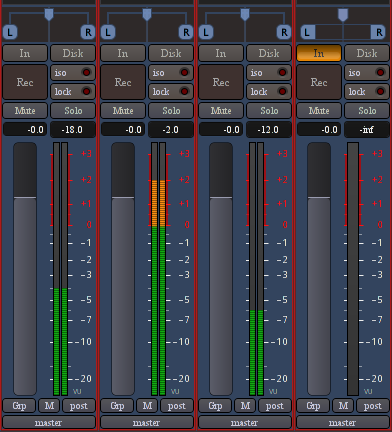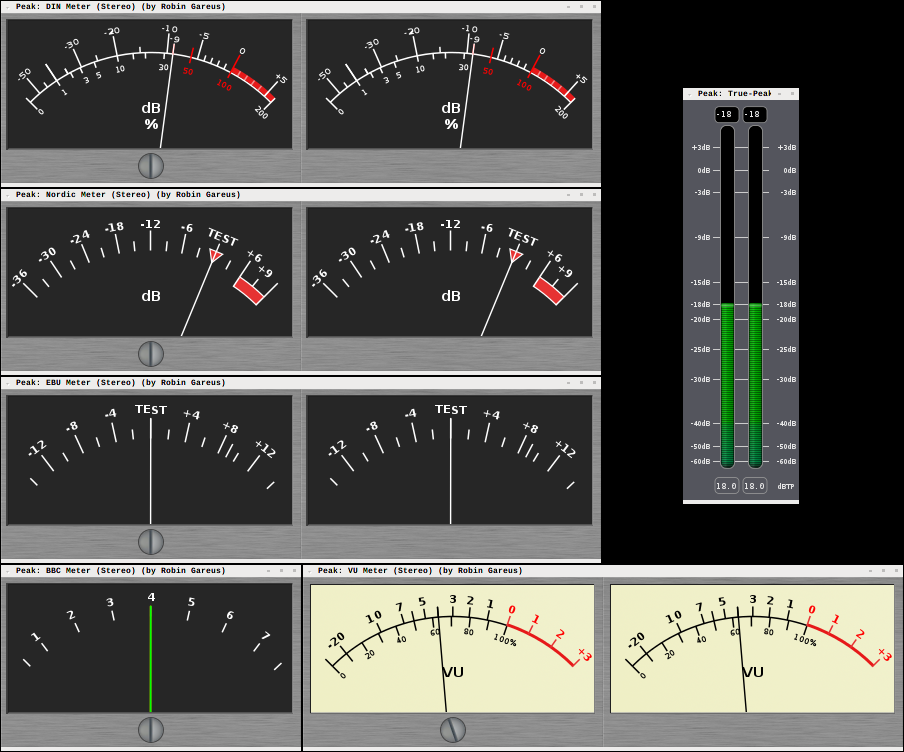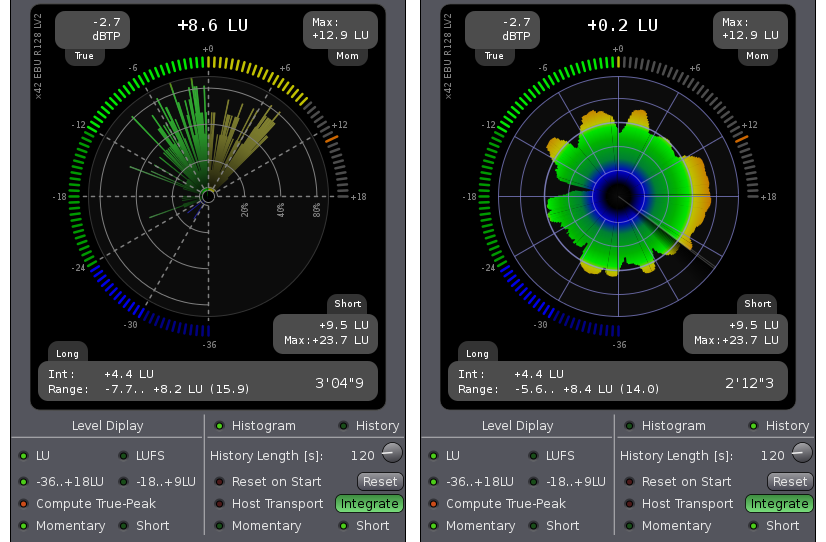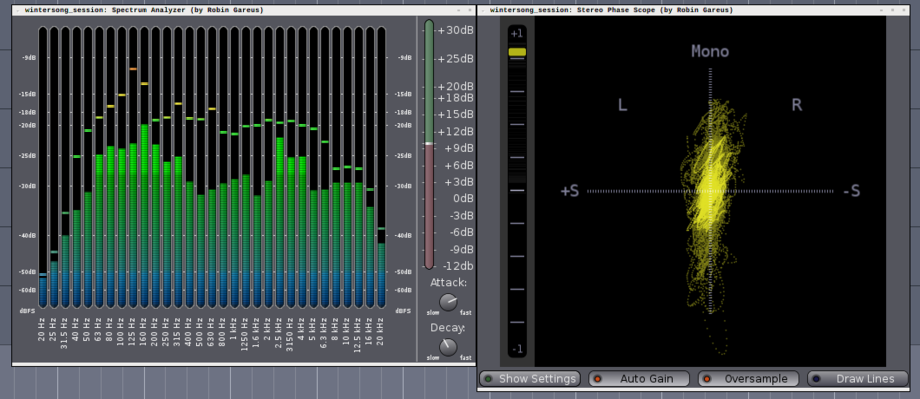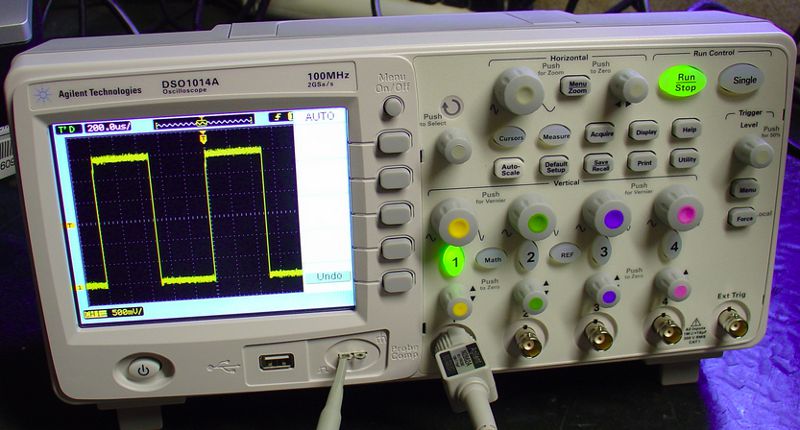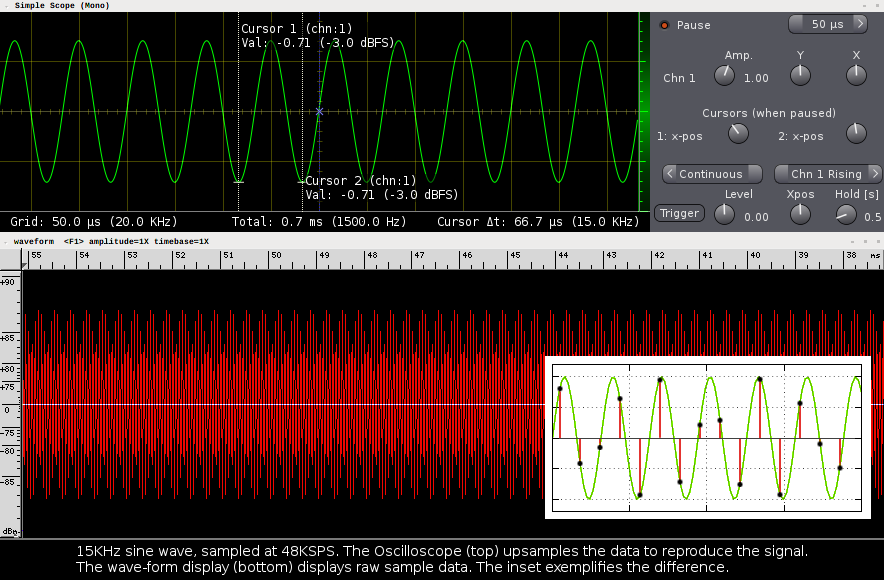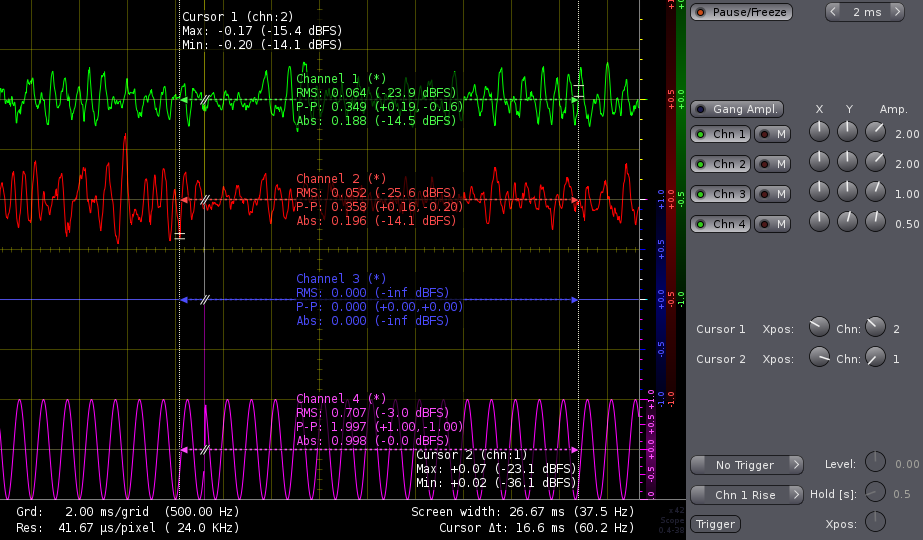Why measure ?
- When tracking, meters are used to ensure that input signals do not overload and maintain reasonable headroom.
Why measure ?
- When tracking, meters are used to ensure that input signals do not overload and maintain reasonable headroom.
- Meters offer a quick visual indication of activity when working with a large number of tracks.
Why measure ?
- When tracking, meters are used to ensure that input signals do not overload and maintain reasonable headroom.
- Meters offer a quick visual indication of activity when working with a large number of tracks.
- During mixing, meters provide a rough estimate of the loudness of each track.
Why measure ?
- When tracking, meters are used to ensure that input signals do not overload and maintain reasonable headroom.
- Meters offer a quick visual indication of activity when working with a large number of tracks.
- During mixing, meters provide a rough estimate of the loudness of each track.
- At the mastering stage, meters are used to check compliance with upstream level and loudness standards, and to optimise the dynamic range for a given medium.
What to measure ?
- Focus on medium: highlight digital number, or analogue level constraints.
What to measure ?
- Focus on medium: highlight digital number, or analogue level constraints.
- Focus on message: provide a general indication of loudness as perceived by humans.
What to measure ?
- Focus on medium: highlight digital number, or analogue level constraints.
- Focus on message: provide a general indication of loudness as perceived by humans.
- Focus on interoperability: strict specification for broadcast.
Types of Meters
- DPM (digital peak meter) displays the absolute maximum signal of the raw audio PCM signal. Focus on medium. ie. digital numbers, and Analog/Digital converters.
Types of Meters
- DPM (digital peak meter) displays the absolute maximum signal of the raw audio PCM signal. Focus on medium. ie. digital numbers, and Analog/Digital converters.
- RMS (root mean square) type meters provide a general indication of loudness as perceived by humans. It emphasizes on the message as opposed to technical, medium related parameters.
Types of Meters
- DPM (digital peak meter) displays the absolute maximum signal of the raw audio PCM signal. Focus on medium. ie. digital numbers, and Analog/Digital converters.
- RMS (root mean square) type meters provide a general indication of loudness as perceived by humans. It emphasizes on the message as opposed to technical, medium related parameters.
- IEC type meters are a mix between DPM and RMS, created mainly for the purpose of interoperability. (broadcast instustries: BBC, EBU)
On Measurements
The whole point of measuring things is to be able to meaningfully compare the reading of the meter to that of another [similar] meter.
On Specs (1/2)
The IEC specs are designed such that all meters complying with the specs, even when using completely different implementations, will produce identical results.
On Specs (2/2)
- Audio Level Meters are standardized (IEC, ITU, IEEE, DIN, BBC,…)
- Due to historical and commercial reasons various standards exist
- The scale of [most] meters is logarithmic (dB)
- Different types - Medium vs. Content.
Key Characteristics of Audio Level Meters
- Alignment or Reference Level and Range
- Ballistics (rise/fall times, peak-hold, burst response)
- Frequency Response (filtering)
VU meter specs (ASA C16-5-1942)
- “The reading shall be 0 VU when for an AC voltage equal to 1.228 Volts RMS across a 600 Ohm resistance”
- “The rise time, defined as the time it takes for the needle to reach 99% of the distance to 0 VU when the VU-meter is submitted to a signal that steps from 0 to a level that reads 0 VU, is 300 ms.”
- “The fall time is the same as the rise time”
- “The overshoot must be within 1 to 1.5%.”
- “The reading must not depart from the reading at 1kHz by more 0.5 dB between 25 Hz and 16 kHz.”
Presonus Tube Pre - a VU meter toy
- incorrect deflection (not to scale)
- not useful for measurements (but it looks cool :)
Two Commercial Plugins - digital VU toys
- LSR Audio – incorrect ballistics (overshoot, rise/fall times, jitters at lower freq)
- PSP Audioware – incorrect frequency response
meters.lv2
- IEC 60268-17 / VU
- IEC 60268-10 Type I / DIN
- IEC 60268-10 Type I / Nordic
- IEC 60268-10 Type IIa / BBC
- IEC 60268-10 Type IIb / EBU
- Stereo Phase Correlation Meter (Needle Display)
- EBU R128 Meter with Histogram and History
- Digital True-Peak Meter (4x Oversampling)
- Goniometer (Stereo Phase Scope)
- IEC61260 30-Band Spectrum-Analyzer
- Phase/Frequency Wheel
- Stereo/Frequency Monitor
- DR14 (pleasurizemusic.com, specs by tischmeyer/algorithmix)
Real World Testing
Source Code & Documentation
- Source-code at https://github.com/x42/meters.lv2
- Licensed under GPLv2
- Binaries available for OSX, GNU/Linux
Contributors:
- Fons Adriaensen – DSP-expert (jmeters)
- Jaromír Mikeš – packages for Debian/Ubuntu
- Alexandre Prokoudine – P&R; sponsored book
- Chris Goddard and Axel Müller – testing
- Joern Nettingsmeier – inspiration & motivation
References
- “Audio Metering: Measurements, Standards and Practice: Measurements, Standards and Practics”, by Eddy Brixen. ISBN: 0240814673
- “Art of Digital Audio”, by John Watkinson. ISBN: 0240515870
Part II - Oscilloscope
Requirements
For an an oscilloscope to be useful for engineering it must
- reproduce the signal (regardless of sampling rate)
- be calibrated - both in time and level
- allow acquisition of particular events (triggering, signal history)
- provide numeric read out
An oscilloscope is not just a waveform display!
Sisco.lv2 - Simple Scope
- classic audio oscilloscope with variable time scale
- triggering and buffering
- cursors
- numeric readout
- LV2 plugin format and standalone jack application
It is feature complete for an audio-scope but it is rather simplistic compared to contemporary hardware oscil loscopes..
Source Code & Documentation
- Source-code at https://github.com/x42/meters.lv2
- Licensed under GPLv2
- Binaries available for OSX, GNU/Linux
Thanks to:
- Fons Adriaensen – LAC'13 paper
- Jaromír Mikeš – packages for Debian/Ubuntu
- Aurélien Leblond – video tutorial (w/ingen & AMS)
- Damien Zammit – power user & tester
- Tomas Brand – for insisting on making it scalable
The End
Thank you for your attention.
